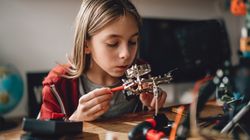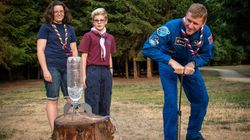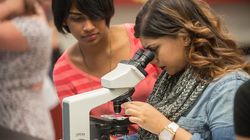
In all my life, I’ve never felt closer to a character in a film than when I watched Hidden Figures. It was late 2016 and I was moved to tears watching a young black girl solving simultaneous equations on a blackboard in front of a class of older children. It was as if the scene had been taken from a film of my life.
The pioneering role Katherine Johnson, Mary Jackson and Dorothy Vaughan played in the early days of the US Space programme only came to wider public attention through this film, and to some extent the book on which it is based, which begs the question: ‘How many other role models are there whose story is yet to come to light?’
Growing up in East London, I had very few role models, just a love of my subjects to carry me along. I was fortunate to grow up in a family where interests were encouraged from a very early age. Under different circumstances my love for computing may have been less well recognised.
Through my work with Stemettes, I’ve been fortunate enough to meet engineer Mae Jemison. Jemison was the first African-American woman in space. She remains passionate about encouraging more ethnically diverse students to consider careers in STEM. On her space shuttle mission in 1992 she took a photo with her of Bessie Coleman, the first African-American women to ever fly an aeroplane. I find myself asking: ’Where were these people when I was growing up?
Black History Month is a timely reminder that there are plenty of inspiring stories yet to be told. We’re lucky enough to be alive at the same time as Jacky Wright, Sharmadean Reid and Suki Fuller; tech industry heavyweights; while engineer, scientist and TV presenter Maggie Aderin-Pocock is a fantastic role model.
Nevertheless, concern about a lack of diversity in science and engineering is well justified. We live in a world where the things engineers design and create are used by everyone. It’s essential therefore that those who lead in these fields reflect that diversity.
I am optimistic that things are changing, my only issue is with the speed of that change. This problem comes with a deep-rooted historical context, a broad acceptance of long-standing societal norms. There is also an issue here with how women’s roles have been traditionally perceived in society and in the workplace.
The government’s Year of Engineering campaign is playing a big part in that too, tackling these jaded perceptions by giving kids direct experiences; demonstrating the opportunities available in everything from tech and healthcare to the engineering behind sport and music. The campaign’s aim is to have given children one million direct and inspiring experiences of engineering by the end of this year – including meeting real engineers from all backgrounds; surely that has to make a big difference when it comes to tackling out-dated preconceptions about the kind of future careers that might be available to them?
We need to remove the fear of flying high and flip these myths on their heads. We need to show young women and those from ethnically diverse backgrounds that the world of STEM needs them, and is a natural place for many of them to be. There are so many options and so many pathways available for those with curiosity, creativity and a desire to solve problems.
The culture is undoubtedly changing, and a celebration of untold stories has a lot to do with that, but it’s important to remember that what we’re demanding here is a seismic cultural shift, which will need to run through all strata of society if it is to work; it’s a big ask. Those of us working in these fields must rise to the challenge and become the role models that we never had. The old adage that ‘you can’t be what you can’t see’ might not be true for all of us, but it is true for many.
Anne-Marie Imafidon is the founder of Stemettes, an organisation which encourages an interest in STEM (Science, Technology, Engineering and Maths) among girls.
If you have a story, an experience or an idea you would like to share with HuffPost UK during Black History Month, please email: blackhistorymonth@huffpost.com


